

Table of contents
- The normal houseplant
- The "suffering" houseplant
- Quality and age of the substrate
- Substrate that is as natural as possible
- Substrate from the trade, "potting soil"
- The flower pot bucket
- The plastic pot
- The Clay Pot
- The pot size
- The withered houseplant
- Other casting errors
- Conclusion
Watering plants and flowers in the room often enough is quite easy, whenever they need water - say experienced people Indoor gardeners who can estimate how much water a plant actually needs and who know the best spacing are. But beginners first have to learn to appreciate all of this, and there are also various exceptional situations:
The normal houseplant
Even with the "normal houseplant", in a healthy condition and nice and green and strong, there are quite a few of factors to consider in order to water this plant in the right measure and at the right intervals take care of.
The more plants you have already taken care of, the better you can instinctively judge the right amount of water and the watering intervals. Scientists who don't like to rely on instinct, but rather develop precise bases for action based on proven facts would try to determine the factors on which "proper watering" depends and then in an attribution analysis evaluate. Unfortunately, no one has done this for houseplants, but you don't have to be a scientist to collect the factors that influence the water requirements and watering frequency of a plant have:
- The biomass that the plant has already developed probably has the greatest influence on the water requirements of a plant
- This means both the roots and the shoots, leaves, flowers above the ground
- Numerous genetically determined differences between plant species have a major impact on water use
- Small, young plants consume a relatively large amount of water because they are programmed to grow (formation of new cells).
- But if only a few leaves have to be cared for, the water requirement is fairly limited
- Larger plants use less water if they let shoots mature or become woody
- Consumption increases during budding in spring and during flowering
- Rule of thumb: the larger the leaves and flowers, the greater the thirst
- Plants in very light-rich locations have a high rate of photosynthesis and, as a result, high water consumption
- In addition, a lot of water evaporates in such locations, just like in rather warm locations, this water also has to be replaced
- The frequency of watering depends, of course, simply on consumption
- And then of the thought that rain naturally occurs at certain intervals, the plant household is geared towards it
- With some plants at very large distances in copious amounts, these succulents store water
- "Normal" plants suck their cells full when it rains, and the water remaining in the soil dissolves nutrients that are gradually absorbed
- If you water little all the time, some poorly soluble nutrients cannot be dissolved
So first find out whether a plant (just) needs a lot or little water, and then give this water in large doses as far as possible. Rather scarce, you make yourself unnecessary work if you spoil your plants with plenty of water. Only water when the plants are already looking so limp that they are probably about to drop their leaves. Promotes root development, makes plants robust, can prolong flowering and saves water.
The "suffering" houseplant
Keeping a houseplant "normal" requires a great deal of knowledge about plants and the living conditions that plants need. Of course, not every person has this from the start, and in the course of the learning process one or the other naturally goes wrong, which can then also influence the casting.
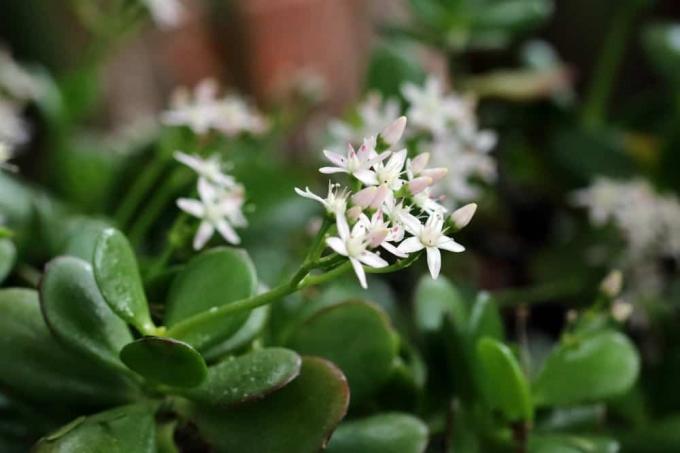
Whenever a houseplant seems to be bitchy or overly picky about watering, there are several things to check:
Quality and age of the substrate
The quality of the substrate has an effect on the water requirements of a plant over time:
Substrate that is as natural as possible
In the best case, the “substrate that is as natural as possible” comes simply from nature. If you have a garden with a good, well-kept garden soil, there is no reason to buy a commercial mix substrate that you need to check the quality of before you buy it. A well-groomed garden soil is also constantly improved by the activities of soil organisms that process plant residues more, on mulch or on top of the compost, so you shouldn't have any trouble finding some soil for your houseplant to branch off
This garden soil must now be adjusted to the needs of the corresponding houseplant. These needs depend on the origin of the plants, native plants usually get along well with normal garden soil in pots. In the case of imports from foreign countries, the "good garden soil" often has to be made "leaner" by mixing in sand because the plants are used to states of deficiency. It may also be necessary to lower the pH value by mixing in lime, or to produce an almost bacteria-free substrate (heating in the oven) for exotic species that don't like our microorganisms at all, and some gravel at the bottom of the pot is always good if you're not growing an aquatic plant want. These plants can usually be watered for a long time without changing the soil as described above.
Substrate from the trade, "potting soil"
The term substrate already indicates it: The potting soil from the trade is not the soil that the normal person expects from the term. But a complicated mixture of all sorts of substances that often have nothing to do with earth.
This does not necessarily have to be negative, it is e.g. B. certainly far better for the environment to pack any leftovers from wood production into the substrate than to destroy our last moors through peat cutting. Certainly also for the plants, the older the peat (= more environmentally harmful the peat extraction), the less its pH value has anything to do with normal garden soil to do and loosen up the substrate - the only thing that the ancient/fossil material peat should do in the commercial substrate - can be done with very many fabrics.
But “earth” is a living organism, ideally populated by a multitude of microorganisms and small animals that constantly process the substances in the earth and thus ensure that they are permeable to water, but also capable of storing water remains.
Everything that is mixed into the substrate in the trade usually does not offer these microorganisms and small animals any Livelihood, a purchased substrate therefore loses water permeability more or less quickly and water storage capacity. Many substrates quickly turn into a kind of concrete that is only loosened by the roots of the plant. These can even include inferior to polluting substances that are little or no in potting soil have nothing to look for, when buying potting soil is therefore good information about the ingredients hip, trendy, popular. There are also good substrates that have been screened for contaminants and are thoughtfully mixed, but again they are mostly not made of "living soil" and will change structure over time.

When a potting soil has passed its "loose stage" you can water as much as you want, the water no longer benefits the plant but simply runs through it. Before you have transplanted the plant into sensible soil, you do not need to worry about the frequency of watering.
The flower pot bucket
The material of the flower pot / tub also has a significant influence on the water requirement and watering behavior:
The plastic pot
The plastic pot does not evaporate moisture, which should speak for itself because you save water. Maybe that could add up to a liter or two for a banana in a bathtub-sized pot, and if you live with hundreds of houseplants, it certainly could. Otherwise, the density of the plastic pot is more of a disadvantage because no moisture equalization can take place. In nature there is often too little water, but for a normal plant there is never too much water, because normal soil, whether lean or nutrient-rich, allows excess water to run off.
A soil with too high a water content is not soil, but mud, in which at most aquatic plants can grow. This is how your indoor plants see it too, if the water drain in a plastic pot is clogged, it kills some moisture-sensitive plants. If the plastic pot is in the sun, it might boil off the roots of the plant a little, which many plants don't like at all. The poor ecological balance of plastic pots and the dubious decorative value does not need to be discussed in detail.
The Clay Pot
If you use a clay pot, you do not have all these problems, on the contrary, the natural material "helps you pour". Clay flower pots can absorb excess moisture and release it to the outside through evaporation. This uses a little more water, but really only slightly more. But it is good for the indoor climate, and most indoor plants are bought to improve the indoor climate.
The clay pot is good for the plant anyway, its water balancing function protects in case of doubt wet feet, the diffusion-open clay wall creates a good, oxygen-rich climate in the root space. Clay is a natural part of the soil and contains nutrients, and the plant also gets some of these.
The following applies to watering houseplants in clay pots: Quite normally, as described above, but you have to be much less careful than with plants in plastic pots.
The pot size
The pot size also has an influence on whether a plant can develop a balanced water balance with largely correct artificial irrigation.

Scientists recently calculated that indoor plants would grow best if they had a liters of pot volume per gram of dry biomass - that would be about the mortar bucket for that cyclamen. Of course nobody does, if only for optical reasons, but it would also be fatal if the cyclamen z. B. a little aloe would be. It would then really get going, quickly becoming a meter high and wide, and with regard to watering, you should consider where the cistern for the watering water should be placed.
But a certain pot size is necessary so that at least a little water equalization can take place - in the wild a plant has a lot of land around for this around and in a healthy plant community also a neighboring plant, which pushes it a little moisture via microcorrhizal fungi before it thirsty. If she doesn't have everything in the pot, you have to replace your plant's nice helper fungi and the entire rest of the natural cycle. It's better if there is some space in the pot, a little water and nutrient storage for supply emergencies. In order to water a plant in a vining pot just right, you would have to be able to read minds - the minds of a plant.
The withered houseplant
When a plant has had enough water, it stands up nicely in the pot because all the cells are soaked. If the water is scarce, nothing happens for a while, if the cells are empty and the shoots are hanging, the water is already very scarce. Then there was nothing more to get from the ground, not with the last root tip, and with most substrates this means that simply watering is no longer effective.
A little later the roots also dry out, and now water from above doesn't help at all anymore, the life-saving liquid flows back through the soil and through the roots and through the drainage hole in the bottom of the pot outside. Earth and water must now be put in a position to absorb water again.
In order for dry roots and hard soil to soften again, they must be soaked in a vessel of water larger than the pot. When the soil soaks, air bubbles will rise, if they don't you can remove the pot to drain.
Other casting errors
There are still a few little things that can bother plants quite a bit when watering:
- If you water indoor plants on the south window in summer in the midday heat, you are quite likely to burn the leaves
- In summer, it is best to water in the morning, and that certainly does not have to be between 3 and 4 a.m., as the Federal Association of Retail Gardeners so realistically suggests
- Simply when it's still cool, so that the water doesn't evaporate when watering or turns into a magnifying glass on the leaves
- In the evening it is less good when the leaves are watered, which then remain wet overnight, which mushrooms love
- Rainwater is not ideal everywhere, only when it has the right pH, 6-7, not below
- In addition, it can be rich in germs, especially in summer
- Indoor plants on the balcony quickly get too much water when it rains
- The drain must then work really well
- You can also mulch large-leaved "drunkards" in the tub, which keeps the moisture in the soil
- Mulching also works with decorative granite chips or pebbles
- The irrigation water should be at room temperature if possible, as some plants react acidically to cold showers
Conclusion
Anyone who understands "watering" somehow and at some point as "pouring water over plants" is still a long way from the famous "green thumb" of the indoor gardener. However, anyone who has once realized that a certain circumstance when casting the indoor plants plays a role and why this is so, usually has none with correct watering problems more.
 garden editorial
garden editorial I write about everything that interests me in my garden.
Learn more about caring for plants
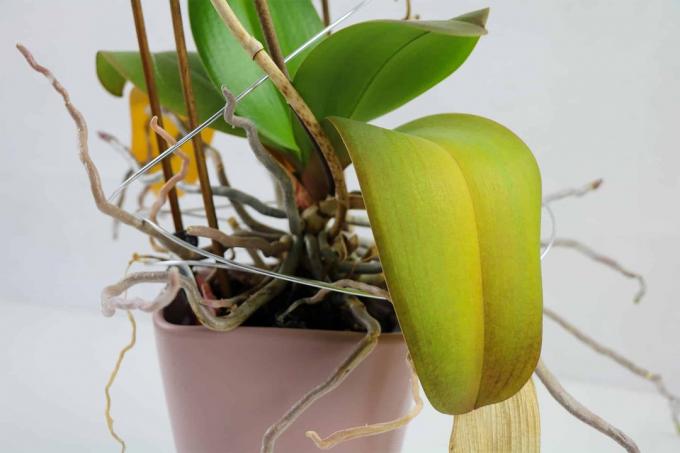
Plant hangs leaves despite water
If plants let their leaves hang despite water, this can have various causes. In order to prevent it from dying off by taking rapid countermeasures, you should find out about the possible causes and effective countermeasures here.
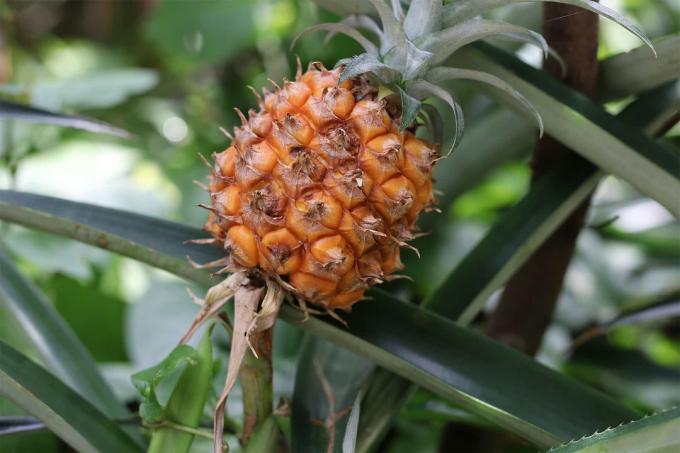
Plants hang their heads: what to do?
If the ornamental plants are cultivated in the garden or in pots and suddenly let their heads droop, then the question quickly arises as to why this can be. However, this is usually due to maintenance errors that need to be checked. If a remedy is found, most plants usually recover quickly.

Repot orchids: how & when to replant
Thanks to more uncomplicated and easy-care new breeds, orchids are now at home on many windowsills. In particular, the Phalaenopsis or butterfly orchid, which is available in countless varieties, is very popular. Read how and when you can best repot the distinctive beauties.

pull tree out of core | 7 tips for growing a tree yourself
Trees can be grown from cores without much effort. There are a variety of plants that have seeds and can be easily cultivated in your own garden. Special classic fruit trees should be mentioned, which are suitable for such a project.
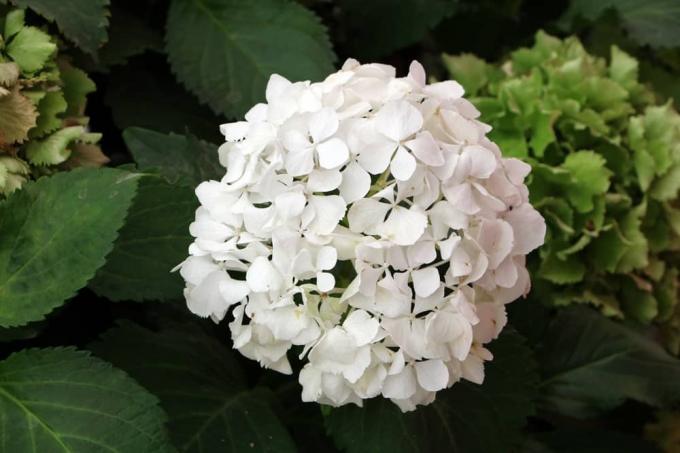
How do hydrangeas stay white? | That way it won't turn pink
How do hydrangeas stay white - this is the question many hobby gardeners ask themselves when the hydrangea changes color. The white often turns into a pink, which is usually comparatively pale or can appear "dirty". Here we reveal how it works.
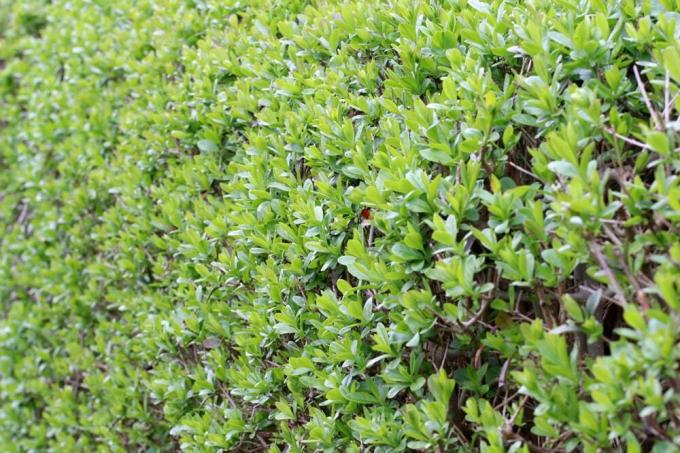
Cutting privet: when is the best time?
Privet is becoming increasingly popular and is often used as a privacy screen in the form of a privet hedge. This is not surprising, because the plant is easy to care for and fast-growing. However, it is crucial to cut the plant regularly at the right time.
